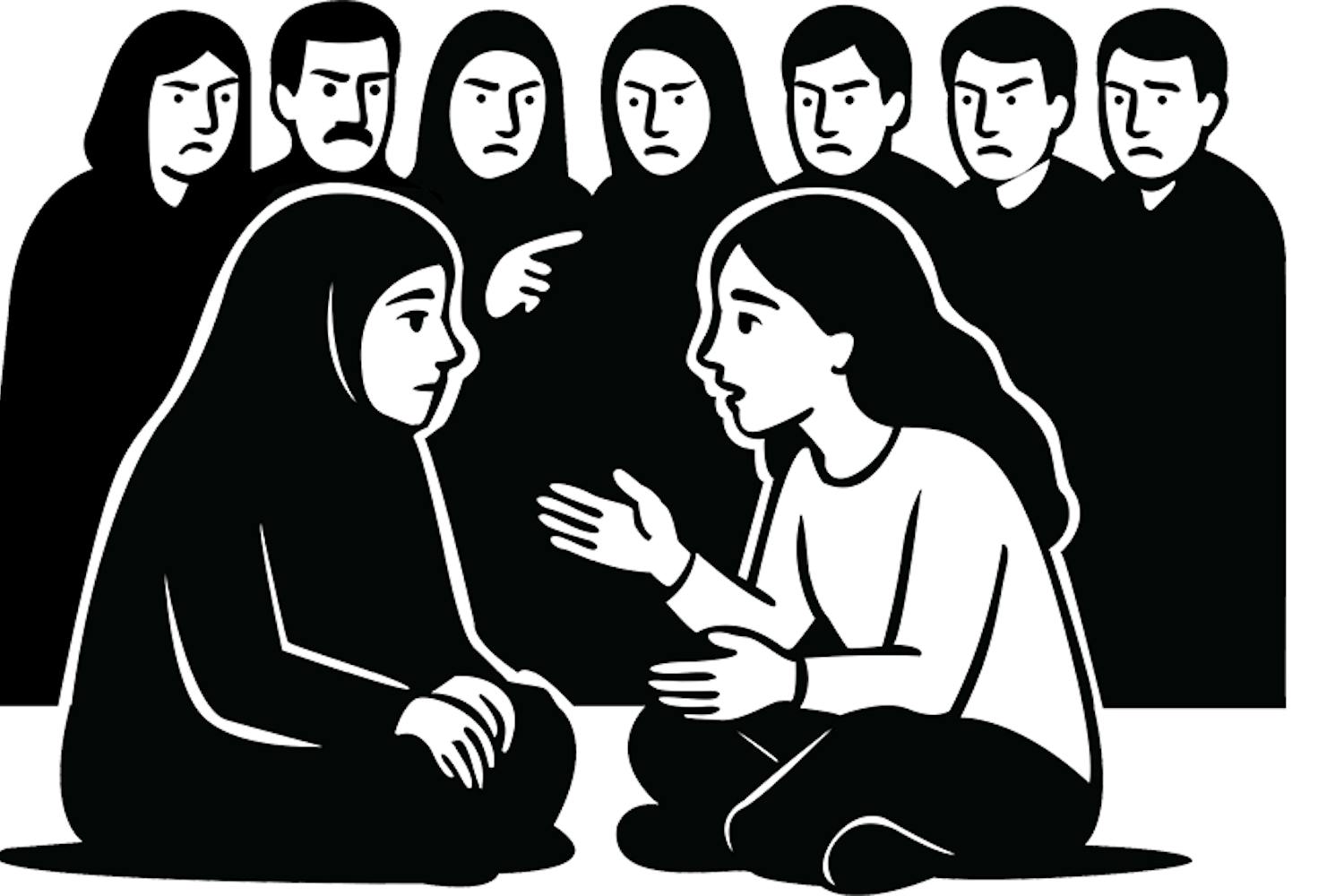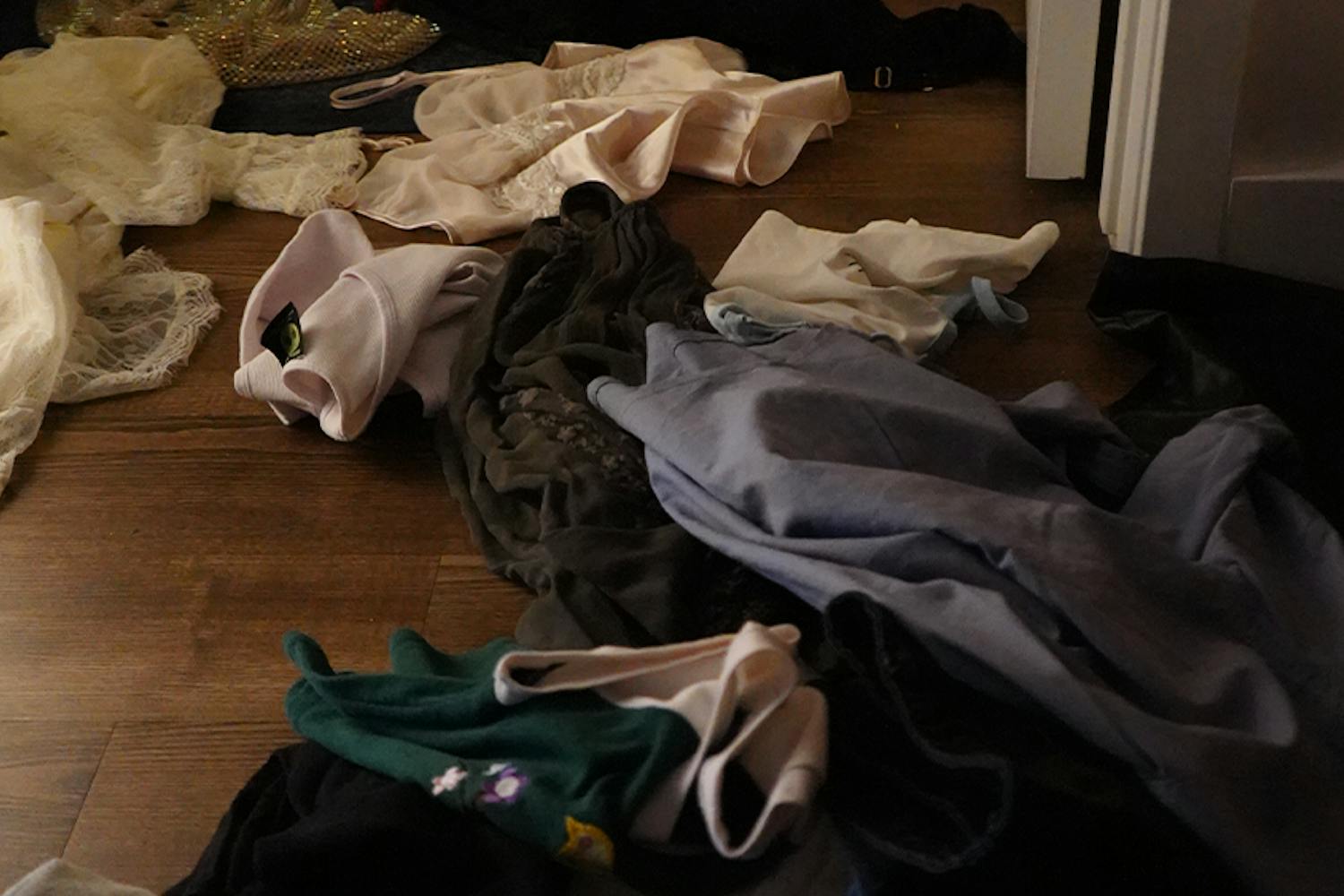Listen to the Article:
You enter a damp, smelly environment. Leopard and tiger prints flash across your eyes. Bodies crowd around a watering hole and watch as others soar through the air and land in it. The alphas assert their dominance while the prey stick to the shadows. There's a cacophony of screeches and howls, and the floor rumbles around you. No, this isn't the Amazon. This is a typical ASU party, and tonight's theme is "jungle."
The next couple of hours are a chaotic blur. You block out looming due dates and academic responsibility by reminding yourself to have fun, so you wade deeper into the wild and don’t turn back.
Parties have been a staple of ASU's reputation for decades. Most notably, ASU has consistently appeared in Playboy's top party schools rankings and even took first place in 2002. While the University has made strides in distancing itself from its notorious reputation, there's no pretending that parties have been completely eliminated from campus culture.
Party school or not, students find time to let loose and have fun, and it seems that throughout time, the manners in which students party have remained consistent. Even though different periods of time are responsible for characterizing what happens at a party, students’ sentiments about parties today seem to align with alumni reflections of their rambunctious college years.
A drunk history
Tony Lang began his academic career at the University in 1976 and attended ASU for three semesters before dropping out. On a recent visit, he walked through the Tempe campus admiring how everything had changed, but he found himself lamenting the opportunities he lost to the turbulent party scene.
"I still walk here with a semi-broken heart wishing I could've been here mentally and physically all at the same time," Lang said.
Lang recalled neglecting his studies, spending most of his time in an intoxicated stupor surrounded by friends and strangers. At the time, ASU stoked the desire of students who arrived on campus looking to party before they even set foot in a classroom. The potent party culture that defined most of the '70s and '80s was embroiled in campus life — and students paid the price.
The pillar of party culture in that era was Alpha Drive. According to Salt River Stories, Alpha Drive was constructed in the 1960s to support a group of fraternities, as it evolved from the University administration's desire to have some semblance of organization and control over the fledgling party scene in the 1950s.
However, according to a 2004 Phoenix New Times article, the frats on Alpha Drive still controlled their own drinking policies. On top of that, once the drinking age was lowered to 19 in the late '70s, things got out of hand. Throughout the next few decades, parties were characterized by drinking, hazing and fighting — some instances are detailed in a 2011 article by The State Press.
"All students — not just fraternities and sororities — began drinking on campus legally. And a few years later, when the drinking age was again raised to 21, it was too hard to turn the kids back to the way things used to be," Joe Watson wrote in the Phoenix New Times article.
Shelly Adams, who graduated from ASU in 1981, said many of the parties at the time were reminiscent of the 1978 film, "Animal House" — toga-themed parties had a hold on the scene for a time after the movie was released. While she said she doesn't remember specifics, many of the parties she went to had at least two or three kegs, a ton of people in small areas, loud music and people running through the crowds.
One party was "actually a little too wild," she said. "Even for me, and I was kind of a party girl myself," she added.
At parties in general, "the boys got a little bit too drunk and a little too wild, and they were misogynistic," Adams said. "That was what I really remember, but more than that, it was just a wild, drunk time."
Lang reflected on the party scene at the time, saying "I wish the late '70s and '80s weren't a cocaine-, drug- and alcohol-fueled mess."
"I walk through this place and have regrets that I wasn't able to utilize and experience the full education I could have gotten," Lang said. "[I wonder] where my life [would’ve] have gone if I would’ve not been so much into the party side of the spectrum."
The party never stopped
Allison Nahon, a senior studying biochemistry, has a closet of clothes she's keeping for her sister who will be a freshman at ASU next year. The clothes are a colorful collection of themed outfits she’s donned at parties throughout her time in college. Bikini tops and cutoffs complete with cowboy hats and sunglasses are the haute couture of the ASU party scene.
Nahon remembers her time in crowded college houses well. Coming from a small high school, she sought out parties as a way to make friends during her transition to a densely populated university. When Kyle Mona-Hunter, a junior studying exercise science, arrived at ASU, he was surprised, as the University’s past reputation still precedes itself.
"I was expecting parties everywhere, all the time, but that’s not really true," Mona-Hunter said.
To him, it seems Crow's New American University model has worked. "You really have to go further, especially as a guy," he said. "The only way for you to go out is [to] go to house parties, which are weird, or join a fraternity."
Though, despite the distinct lack of parties, both Nahon and Mona-Hunter noticed that the parties they have gone to run rampant. Mona-Hunter was shocked by the open use of drugs, like cocaine.
"I feel like [substances are] just normalized, especially with cocaine, people just do it out in the open," he said. "Mainly [the drug of choice] is cocaine."
Nahon said due to the unpredictable nature of college parties, girls have developed an understanding of keeping each other safe — these networks of “girls supporting girls” provided her with a fleeting sense of safety during her freshman and sophomore years, especially when parties aren’t known to be the most comfortable places for females.
"Parties are largely thrown to attract girls, [so] sometimes they can feel manufactured," she said. "It feels like you’re being watched to have a good time. It feels like if you’re not having a good time, you need to leave."
Mona-Hunter said attendees of these parties, specifically female attendees, should "be on guard" while in attendance. "It’s not like you can trust the people there; you got to be careful," he said.
Looking back, Nahon reflected on what she wished she knew as a freshman in the party scene.
"Always stick to the people you’re with," she said. "When you come with someone, you leave with someone; watch how much you drink and watch your drinks; and stay with your girls, and don’t trust men. That’s valid. That’s honest."
At the end of the day, both Nahon and Adams looked upon parties fondly, mostly because of the way it shaped them as people. "Party culture at ASU help[ed] me make friends and [broke] me out of my shell," Nahon said. "[It] was always really fun — something about being in the sun with all your friends with good music and everyone dancing."
"I look positive on them," Adams said. "It was all part of growing up and turning into an adult. If [I] could go back and do it all over again, I probably would do it the same way."
Though, ASU’s party scene has always been and might always be, as Adams put it, "drunk and disorderly."
Edited by Savannah Dagupion, Leah Mesquita and Audrey Eagerton.
This story is part of The Best of ASU, which was released on April 30, 2025. See the entire publication here.
Reach the reporters at amwilt@asu.edu and amazzill@asu.edu, and follow @AbigailMWilt and @BellaMazzilli on X.
Like State Press Magazine on Facebook, follow @statepressmag on X and Instagram and read our releases on Issuu.
Abigail Wilt is a managing editor for State Press Magazine. She is a fourth-year student majoring in journalism and mass communication with a minor in English literature. She was a fellow for Carnegie-Knight News21 for 2025 and is currently a health disparities reporter for Cronkite News. Formerly, she was a magazine reporter, visuals editor and photographer for The State Press.




